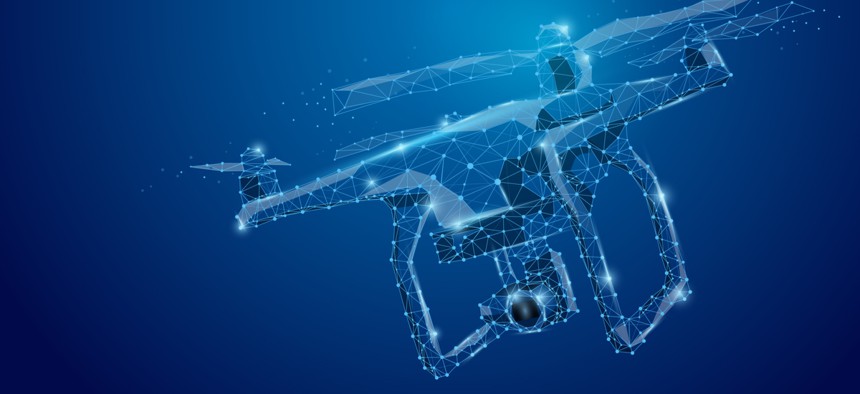NIST Plans New Drone-Advancing Challenge Competition

lebedovskaya/Shutterstock.com
Potential scenarios include locating stranded first responders with thermal imaging, tracking them where GPS is inaccessible, and more.
Planning for a national challenge competition program to examine and advance a range of drone-centered capabilities and operations is in-the-works at the National Institute of Standards and Technology.
The agency intends to negotiate and award a firm-fixed-price purchase order to Kansas State University for the work through “a contract with a size standard of $27 million in annual receipts,” according to a special notice published this week. In it, NIST offered interested entities that might wish to design, host and run the challenge until Dec. 7 to express interest in doing so.
NIST ultimately aims to work out whether competitive procedures could be used for the acquisition—and if they’re not, the agency estimates it’ll issue an award to the university by Dec. 8.
Through its Public Safety Communications Research Division’s Open Innovation Program, NIST steers “challenge” prize competitions that bring together a unique array of collaborators from across the planet to solve some inarguably complex problems that involve emerging technologies. It’s launched two prior drone-advancing programs.
This initial selection of the University of Kansas to host this specific work follows an original sources sought opportunity NIST released in September.
“The need to properly test, validate, and standardize the use of [unmanned aircraft systems, or UAS] for first responders is necessary to protect both public safety personnel and citizen communities,” NIST officials wrote at the time. “Developments coming out of these challenges would drive major advances in the practical applications of UAS and their use by public safety.”
The in-the-making, drone-advancing competition is formally named in the latest opportunity as the “UAS 3.0—Unmanned Aircraft Systems Challenge Program.”
The document offers scenario use cases and requirements potential partners would need to be able to meet in designing the anticipated competitions through this challenge program, offering a glimpse into what all they might entail.
For instance, the agency wants those participating—likely state and local first responders deploying the UAS—to be able to conduct exterior search and rescue operations via the flying robots. In that scenario, those drones would use advanced cameras to locate ‘missing persons’ with sub-meter accuracy.
“The area would likely be heavily forested, so the teams would rely solely on thermal imaging rather than visual confirmation,” NIST said.
NIST also calls for a multi-level structure where GPS is “neither consistent nor accurate,” to advance how first responders inside can be found and tracked for safety.
“Solutions should include an unobtrusive, wearable transmitter for the first responder in the structure whose location is detected by a combination of sensors exterior to the building of which at least one is mounted on a UAV for z-axis measurement,” the agency noted.
And in another scenario, NIST intends to hone in on the security of data transmission and control of UAS, in cases where that control “may be using widely known, legacy communication channels that are exclusively or in part publicly available.” Teams would be expected to ensure secure transmission regardless of that reality, as well as resiliency to attacks.






